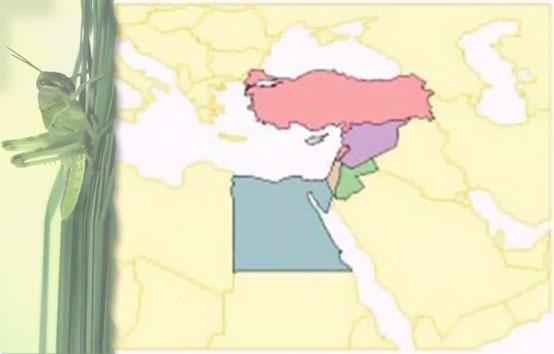Cephus pygmaeus (L.)
Common name: European stem sawfly.
Taxonomic placing: Insecta, Holometabola, Hymenoptera, Symphyta, Cephidae.
Geographic distribution: Europe, North Africa and North America
Host plants: Various cereals, especially wheat (Triticum aestivum L.) and oats (Avena sativa L.).
Morphology: Adult body length about 7-9 mm, shiny black with yellow spots on the abdomen. Body of larva, yellow-white, about 10 mm long, curved, with a brown-red head and short, antennae that are thicker towards the tip, and 3 pairs of underdeveloped thoracic limbs, no prolegs.
Life history: In early spring the univoltine females lay 30-50 eggs each inside the internodes of cereal stems. The hatching larvae gnaw downwards, towards the soil surface and even deeper. At maturity they construct a cocoon wherein they aestivate, pupating towards spring. The adults emerge after cereals had been sown.
Economic importance: Infestation levels and yield losses of 20–55%, and even higher were reported from different regions. The infested stems remain erect but do not develop ears, or if ears occur, they are empty. The damage also consists of reductions in grain weight and quality.
Management
Monitoring: Broken stems resulting from weakened segments where larvae had fed indicate the pest’s presence.
Horticultural methods: Deep plowing to kill the aestivatng larvae, crop rotation with non-susceptible host species, use of solid stem wheat cultivars.
Plant resistance: Cultivars with solid lower stem segments inhibit the development and movement of the larvae, resulting in their increased mortality
Biological control: In different regions the pest is attacked by several parasitoids, especially by species of Collyria (Ichneumonidae), which may kill up to 70% of the sawfly population and in many cases provide good pest control.
References
Altınayar, G., 1975. Studies on distribution, bio-ecology, crop losses and control methods of wheat stem sawfly (Cephus pygmaeus (L.) and (Trachelus tabidus (F.), (Hym: Cephidae) in grain crops in Konya province, Turkey. Research publications, Plant Protection Research Institute, 30. Ankara.
Filipy, F.L., Burbutis, P.P. and Fuester, R.W. 1985. Biological control of the European wheat stem sawfly in Delaware (Hymenoptera: Cephidae). Environmental Entomology 14: 665-668.
Gol’berg, A.M. 1986. Biology of the stem sawflies Trachelus tabidus and Cephus pygmaeus) in the Negev of southern Israel. Entomologia Experimentalis et Applicata 40: 117-121
Özberk, I., Atlı, A., Yücel, A., Özberk, F. and Coşkun, Y. 2005. Wheat stem sawfly (Cephus pygmaeus L.) damage; impacts on grain yield, quality and marketing prices in Anatolia. Crop Protection 24 1054–1060
Shanower, T.G. and Hoelmer, K.A. 2004. Biological control of wheat stem sawflies: past and future. Journal of Agricultural and Urban Entomology 21: 197-221.
